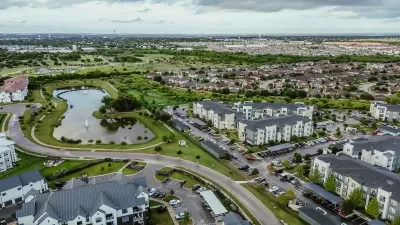San Diego invested $1.5 billion in tax increment to increase housing in its downtown but displaced affordable housing with unaffordable housing. Housing planner, developer and advocate, Murtaza Baxamusa gives some answers and asks some questions.

Between 2000 and 2015, the number of housing units in San Diego's downtown doubled—from about 12,000 to 25,000—and so did rents. More than half of downtown's renters spend above 30 percent of their income on rent—the common benchmark for "unaffordable." Ironically, the vacancy rate has doubled but it is not attributable to a lack of renters. Rather it is attributable mostly to an increase in the number of vacation homes. Thus, it appears that the public resources that went into the downtown redevelopment project, in large measure, have subsidized luxury residences for the well-heeled and reduced downtown San Diego's affordable housing stock. On the other hand, median rent in the rest of the city has caught up to downtown so that that now the downtown area isn't significantly more expensive than downtown. However, however even that fact bodes poorly for non-wealthy renters who aren't just being driven from downtown but have fewer housing options anywhere in the city. Baxamusa cites additional data and includes charts to further demonstrate the disturbing correlation. He concludes:
The intent of this post is to spur a discussion of the affordable housing stock in downtown, and particularly to focus on why new construction is not keeping pace with the removal of the affordable housing stock in San Diego.
For more of Baxamusa's analysis, please read the source article.
FULL STORY: How San Diego’s downtown housing supply boom is making rent less affordable

Planetizen Federal Action Tracker
A weekly monitor of how Trump’s orders and actions are impacting planners and planning in America.

Map: Where Senate Republicans Want to Sell Your Public Lands
For public land advocates, the Senate Republicans’ proposal to sell millions of acres of public land in the West is “the biggest fight of their careers.”

Restaurant Patios Were a Pandemic Win — Why Were They so Hard to Keep?
Social distancing requirements and changes in travel patterns prompted cities to pilot new uses for street and sidewalk space. Then it got complicated.

Platform Pilsner: Vancouver Transit Agency Releases... a Beer?
TransLink will receive a portion of every sale of the four-pack.

Toronto Weighs Cheaper Transit, Parking Hikes for Major Events
Special event rates would take effect during large festivals, sports games and concerts to ‘discourage driving, manage congestion and free up space for transit.”

Berlin to Consider Car-Free Zone Larger Than Manhattan
The area bound by the 22-mile Ringbahn would still allow 12 uses of a private automobile per year per person, and several other exemptions.
Urban Design for Planners 1: Software Tools
This six-course series explores essential urban design concepts using open source software and equips planners with the tools they need to participate fully in the urban design process.
Planning for Universal Design
Learn the tools for implementing Universal Design in planning regulations.
Heyer Gruel & Associates PA
JM Goldson LLC
Custer County Colorado
City of Camden Redevelopment Agency
City of Astoria
Transportation Research & Education Center (TREC) at Portland State University
Camden Redevelopment Agency
City of Claremont
Municipality of Princeton (NJ)





























